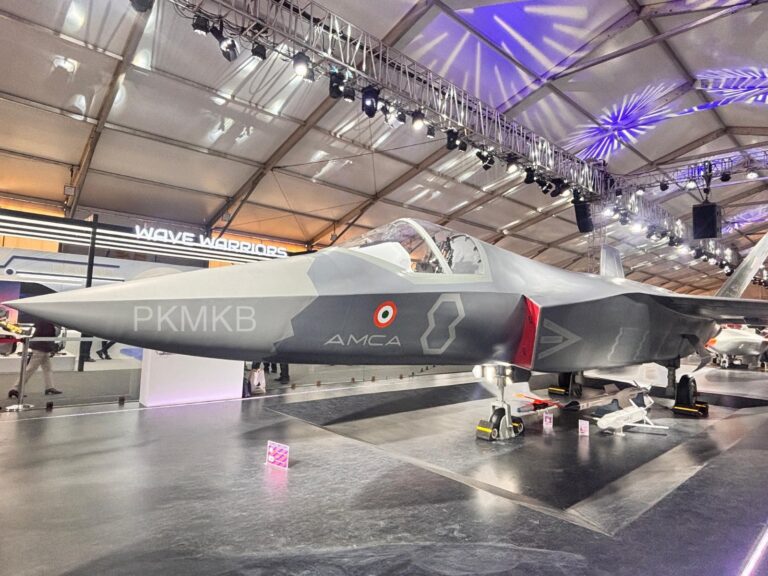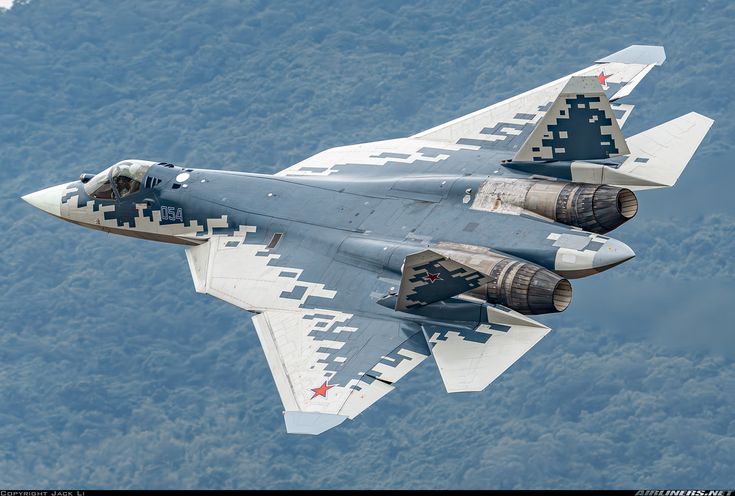India’s Fighter Jet Conundrum
India faces a critical decision regarding the future of its air force capabilities. As the Indian Air Force (IAF) grapples with an aging fleet and a shortage of fighter jets, it is considering its options for new acquisitions. One of the most significant offers on the table is Russia’s Su-57E, a fifth-generation fighter jet with promising features like full source code access and potential production within India. However, this offer is not without competition, as **India is also evaluating the US-made F-35 and its indigenous AMCA program. With geopolitical implications, defense strategies, and technological considerations at play, this decision will shape India’s military future for years to come.
The stakes are high, and the urgency is undeniable. India’s current fleet operates only 31 squadrons, well below the authorized strength of 42. As a result, India is in search of advanced fighter jets to ensure it maintains air superiority in a region increasingly influenced by both China and Pakistan. This article will explore the Su-57E offer, India’s evaluation process, and the broader implications of its decision. We’ll also look into the alternatives, such as the F-35 and AMCA, to understand the full spectrum of India’s defense options.
India’s Growing Fighter Jet Needs

India’s fighter jet fleet has been under significant strain in recent years. With an aging fleet of combat aircraft, the Indian Air Force is facing a critical shortage in its squadrons, operating just 31 of the 42 squadrons that are authorized, as highlighted by multiple defense reports. This shortage has left the IAF scrambling to modernize and expand its capabilities, with an eye on advanced fifth-generation fighters.
India has long relied on its defense partnership with Russia, which supplies a large portion of the country’s military hardware. Historically, India has procured a range of Russian jets, such as the MiG and Sukhoi Su-30, which form the backbone of its fleet. However, with the growing regional security challenges, particularly from China’s military expansion and Pakistan’s defense modernization, India urgently needs to acquire more sophisticated aircraft to maintain air dominance. This pressing need makes the current fighter jet acquisition process crucial, as it involves not only technological and operational aspects but also strategic decisions regarding future alliances and defense self-reliance.
The Su-57E Offer and What It Brings
The Russians Offer Su-57E Stealth Fighters to India with ‘Make-in-India’ Plan and Tech Transfer.
— KAHW (@KahwJk) June 2, 2025
Tech transfer could be utilised further in our own AMCA
This could be the DEAL of the Century #Russia #India #DefenceReview #SU57 #Bharat #DRDO #defence #Jets #MakeInIndia pic.twitter.com/DVxWPVgRDN
In early June 2025, Russia made a compelling proposal to India: the Su-57E, a fifth-generation stealth fighter jet, with the added benefit of full source code access. This offer aligns perfectly with India’s “Make in India” initiative, a policy designed to promote domestic defense production and reduce reliance on foreign imports. The Su-57E’s offer includes full technology transfer, including engines, AESA radars, optics, AI integration, and air weapons, providing India with a significant strategic advantage.
One of the most appealing aspects of the Su-57E offer is the cost. At around $80 million per unit, it is notably cheaper than the F-35A, which costs approximately $110 million per unit. Additionally, the Su-57E offers lower maintenance costs, a crucial factor for long-term operational sustainability. With full source code access, India would have greater control over its air defense technology and could integrate the jet into its existing fleet of Russian platforms without concerns about future sanctions.
However, Russia’s production capacity has raised some concerns. Sanctions and production delays have plagued Russia’s ability to deliver jets on time, which could impact the reliability of the Su-57E program. Despite this, the technology transfer and cost advantage make it an attractive option, particularly for India’s need to quickly modernize its air force.
Evaluating Multiple Fighter Jet Options
As of June 2025, India has not yet made a public decision regarding the acquisition of the Su-57E. Although there is significant interest in the offer, India’s Ministry of Defence and the Indian Air Force continue to evaluate all available options, including the US-made F-35 and its indigenous Advanced Medium Combat Aircraft (AMCA), which is still in the prototype phase with delivery expected in the mid-2030s.
The F-35 presents a strong case with its cutting-edge stealth capabilities and multirole functionality. However, the high cost and maintenance burden of the F-35, coupled with restricted source code access (even for close allies like the UK and Australia), have raised concerns. Some analysts, like Air Marshal Anil Chopra, favor the Su-57E for its cost-effectiveness and technological independence, arguing that the Su-57E better aligns with India’s current defense needs and budget constraints. Conversely, others, like Brahma Chellaney, believe the F-35 fits India’s broader strategy in the Quad alliance, especially given its strategic partnership with the United States.
India’s defence sector soars higher with AMCA an indigenously developed 5th-gen fighter jet, redefining self-reliance and global capability. pic.twitter.com/1BFobCC2WJ
— BJP MINORITY MORCHA (@BJPMinMorcha) May 29, 2025
The introduction of the AMCA, India’s own fifth-generation fighter, is still several years away. As per the latest reports, it is expected to enter service by the mid-2030s, which further complicates India’s decision. While the AMCA promises greater self-reliance and cost-effectiveness, it lacks the immediate operational readiness of the Su-57E and F-35.
Evaluating Multiple Fighter Jet Options
As of June 2025, India has not yet made a public decision regarding the acquisition of the Su-57E. Although there is significant interest in the offer, India’s Ministry of Defence and the Indian Air Force continue to evaluate all available options, including the US-made F-35 and its indigenous Advanced Medium Combat Aircraft (AMCA), which is still in the prototype phase with delivery expected in the mid-2030s.
The F-35 presents a strong case with its cutting-edge stealth capabilities and multirole functionality. However, the high cost and maintenance burden of the F-35, coupled with restricted source code access (even for close allies like the UK and Australia), have raised concerns. Some analysts, like Air Marshal Anil Chopra, favor the Su-57E for its cost-effectiveness and technological independence, arguing that the Su-57E better aligns with India’s current defense needs and budget constraints. Conversely, others, like Brahma Chellaney, believe the F-35 fits India’s broader strategy in the Quad alliance, especially given its strategic partnership with the United States.
The introduction of the AMCA, India’s own fifth-generation fighter, is still several years away. As per the latest reports, it is expected to enter service by the mid-2030s, which further complicates India’s decision. While the AMCA promises greater self-reliance and cost-effectiveness, it lacks the immediate operational readiness of the Su-57E and F-35.
Strategic and Geopolitical Considerations
The decision regarding which fighter jet India chooses will have far-reaching geopolitical and strategic implications. On one hand, the Su-57E strengthens India’s defense autonomy by offering technology transfer and reducing reliance on foreign suppliers. It would also solidify the long-standing defense partnership with Russia, helping to counterbalance China’s growing influence in the region.
On the other hand, the F-35 represents a deeper strategic alignment with the United States, particularly in the context of the Quad alliance. It would also bring India into the high-tech Western defense ecosystem, providing a platform for collaborative defense operations with other Western powers. However, this alignment comes with trade-offs in terms of cost, technology control, and geopolitical tensions with Russia.
Moreover, India’s indigenous AMCA program holds long-term potential but faces challenges in terms of technological development and delivery timelines. As India moves toward self-reliance in defense, the choice of fighter jet will influence the direction of India’s defense industrial policy for the next decade.
India is at a pivotal moment in its defense procurement strategy. With the Su-57E, F-35, and AMCA all on the table, the country must navigate strategic, geopolitical, and financial considerations. The decision will not only shape the future of India’s air force but also its defense relationships on the global stage. As India’s air superiority hangs in the balance, this decision will define its ability to maintain dominance in an increasingly competitive and volatile region. Ultimately, whether India opts for Russia’s Su-57E, the US-made F-35, or sticks with its indigenous AMCA, the choice will reverberate through its defense and foreign policy for years to come. What do you think? Should India prioritize self-reliance, cost, or strategic alliances when choosing its next fighter jet?





















